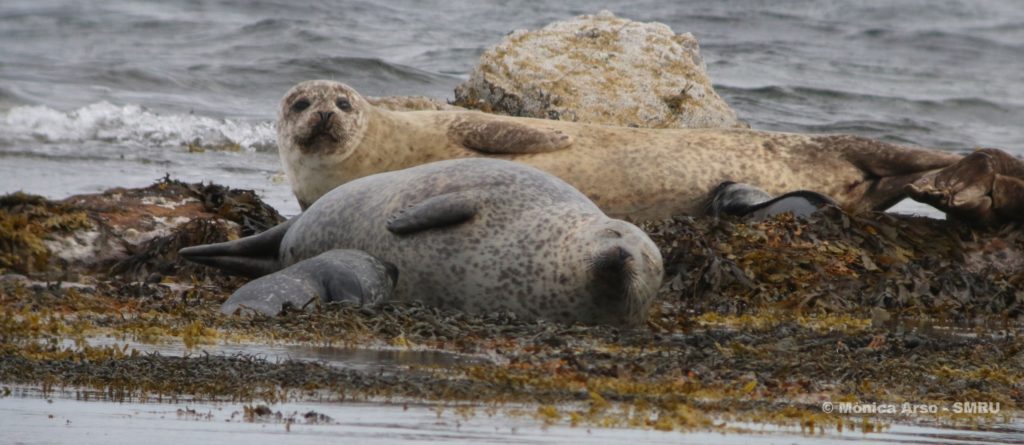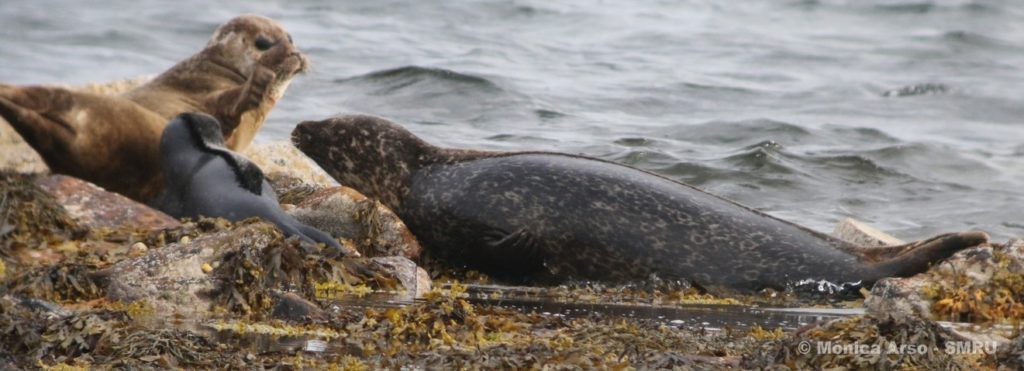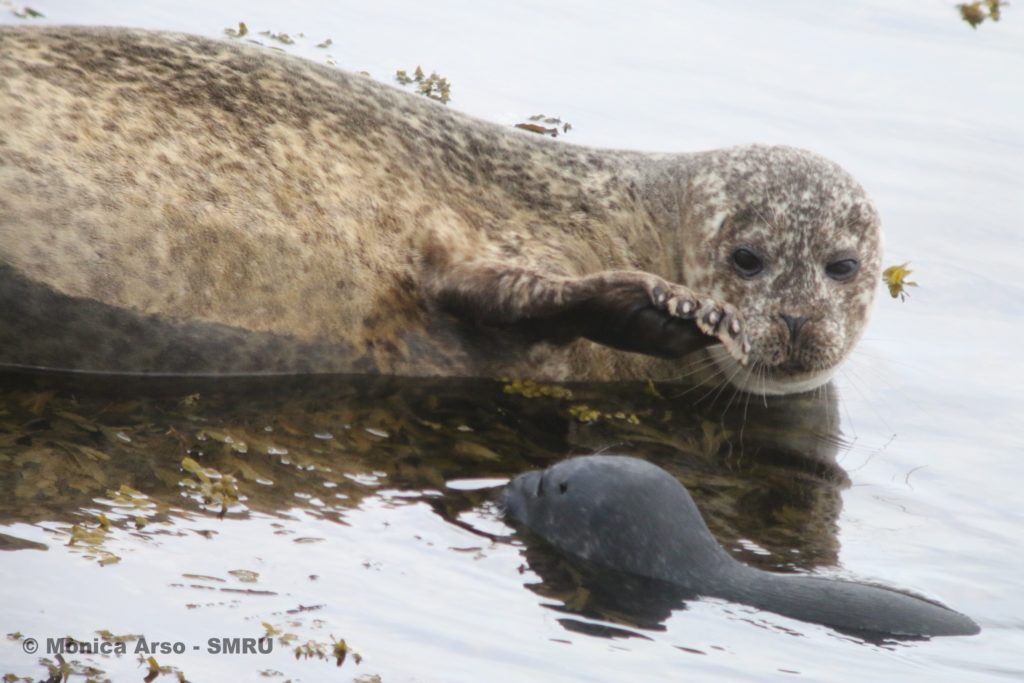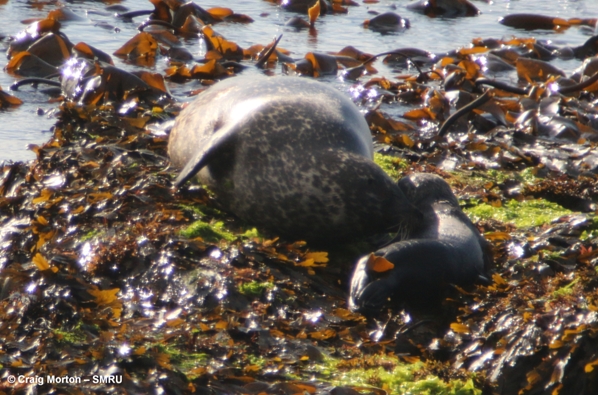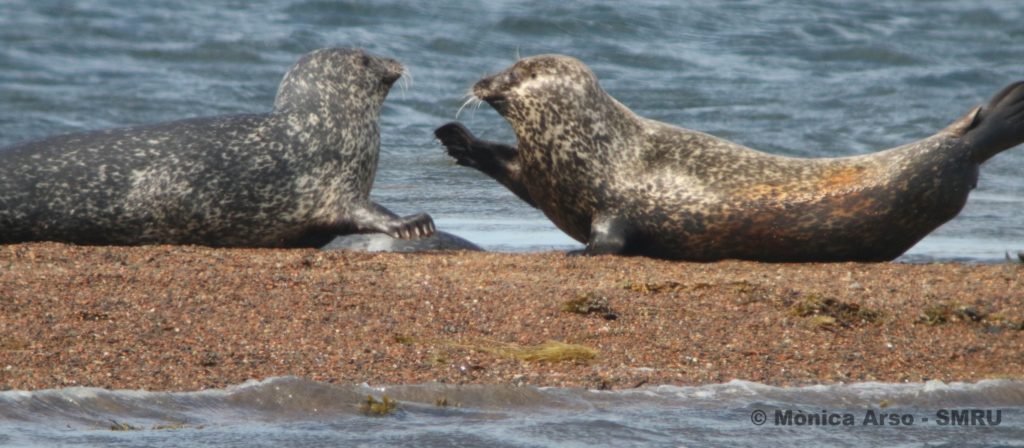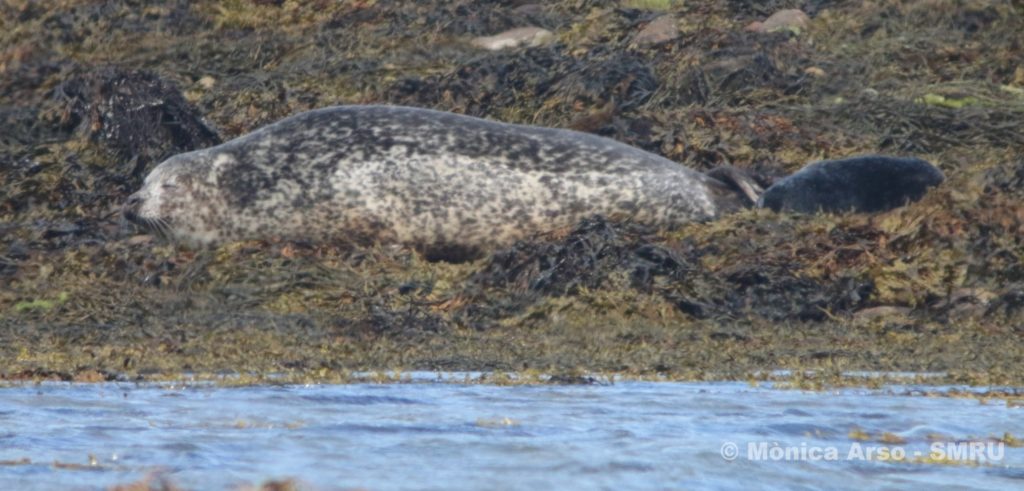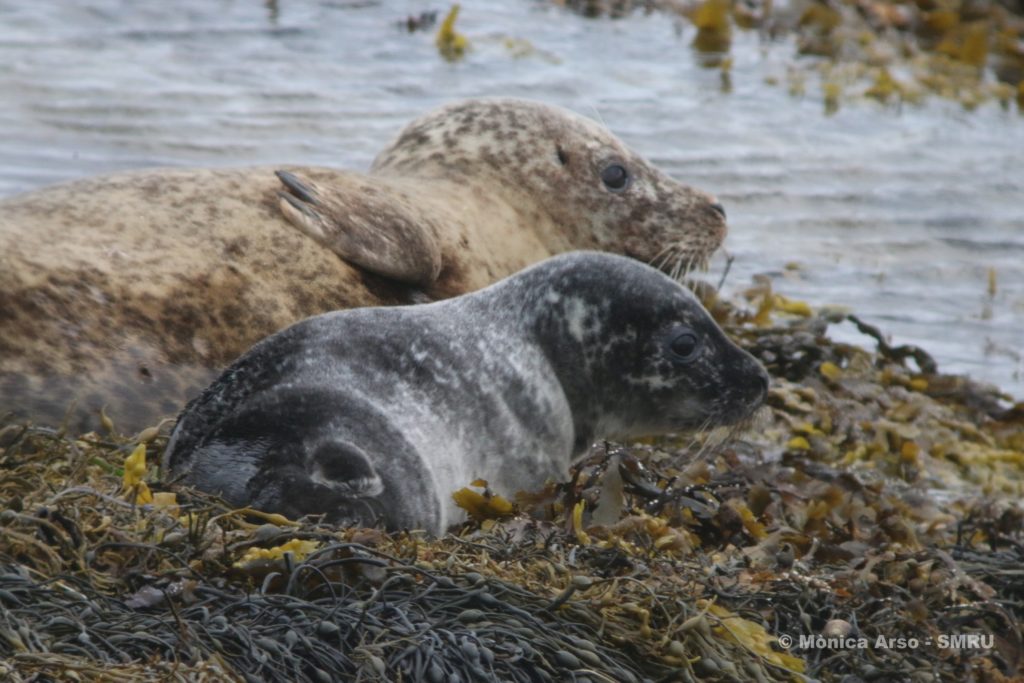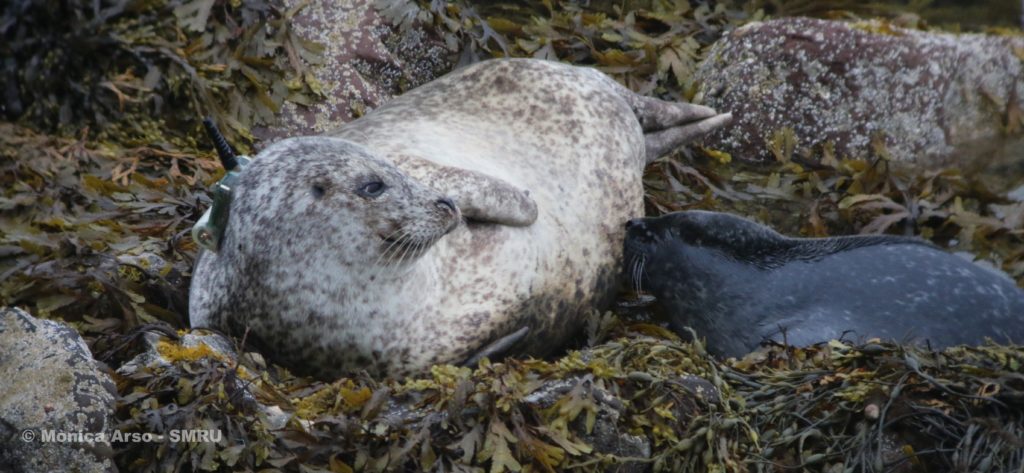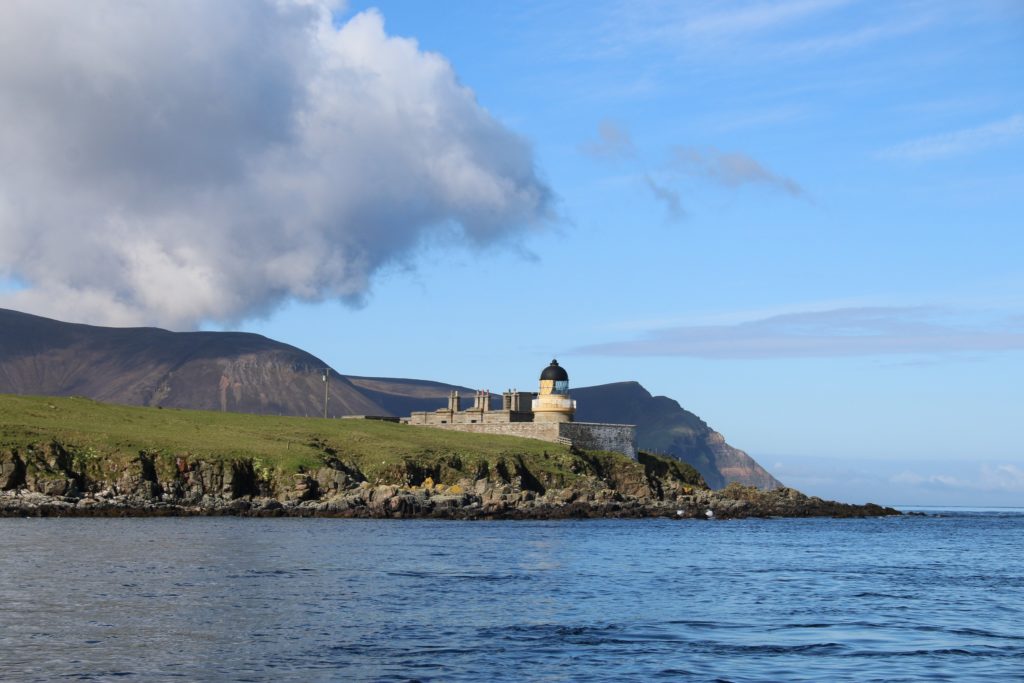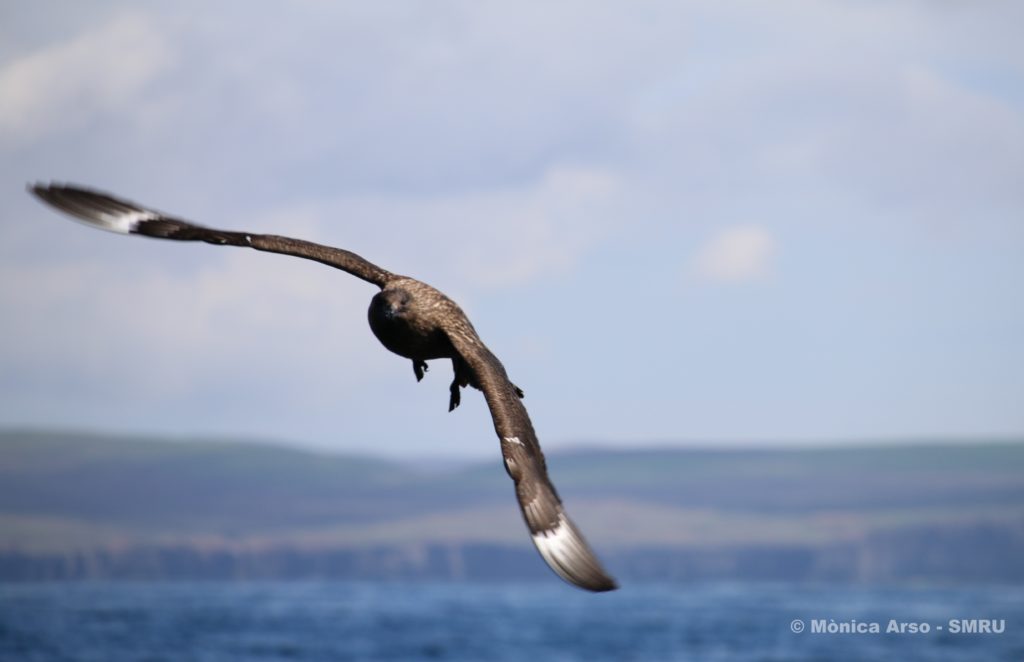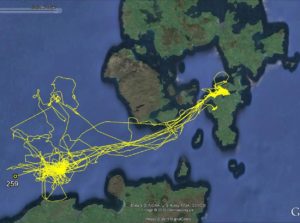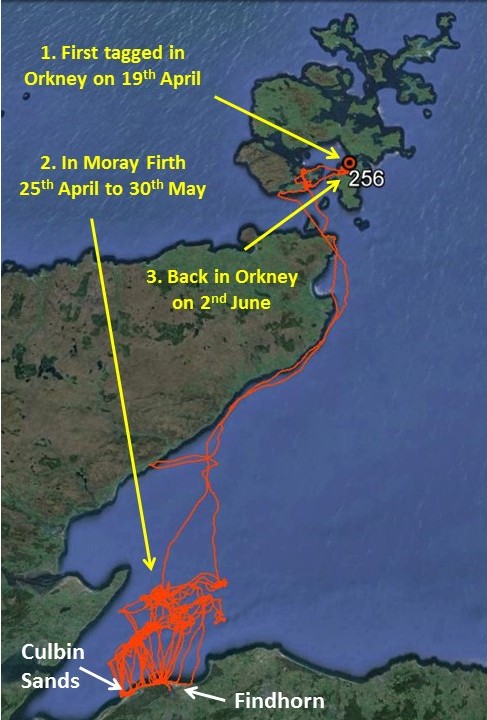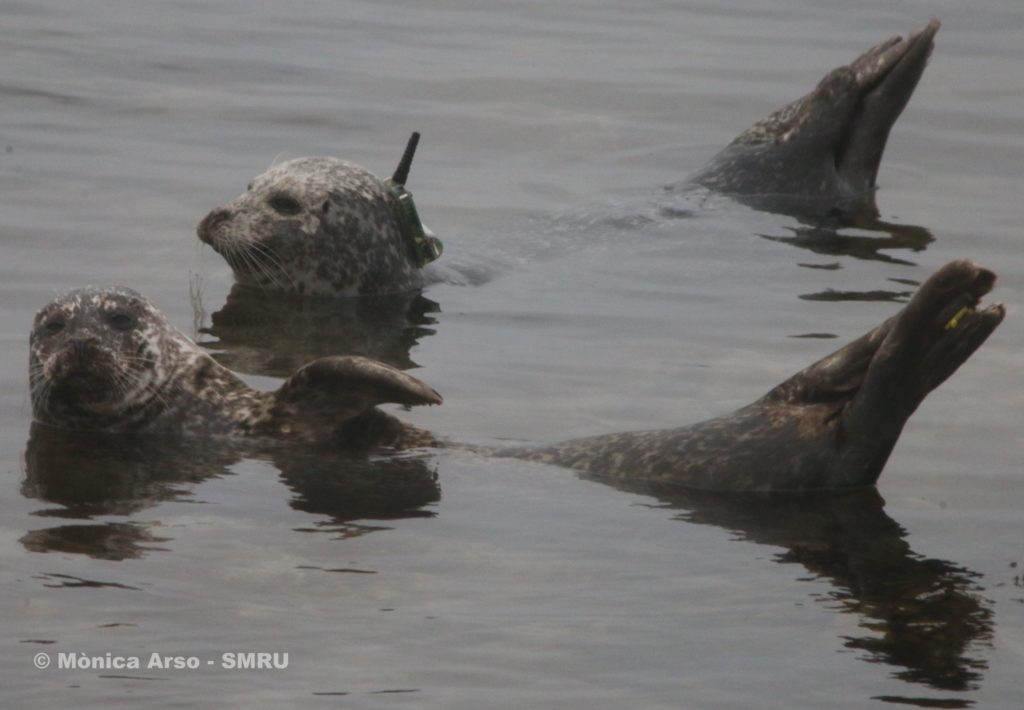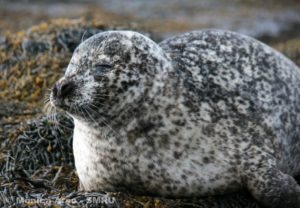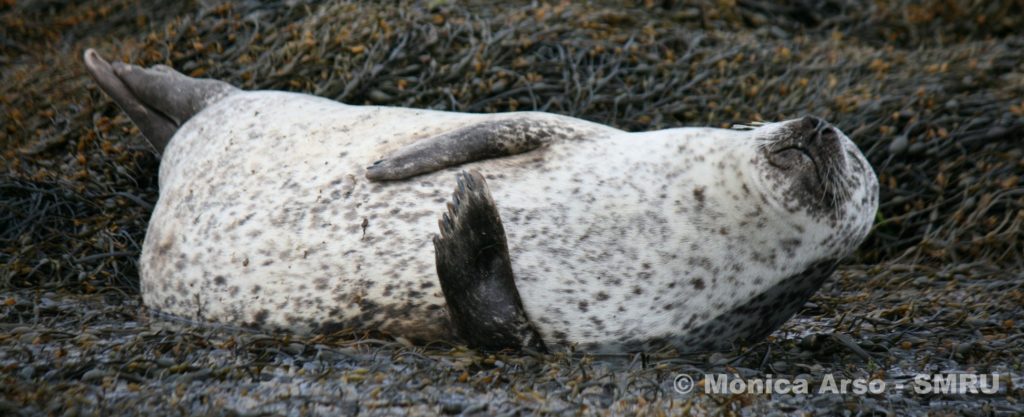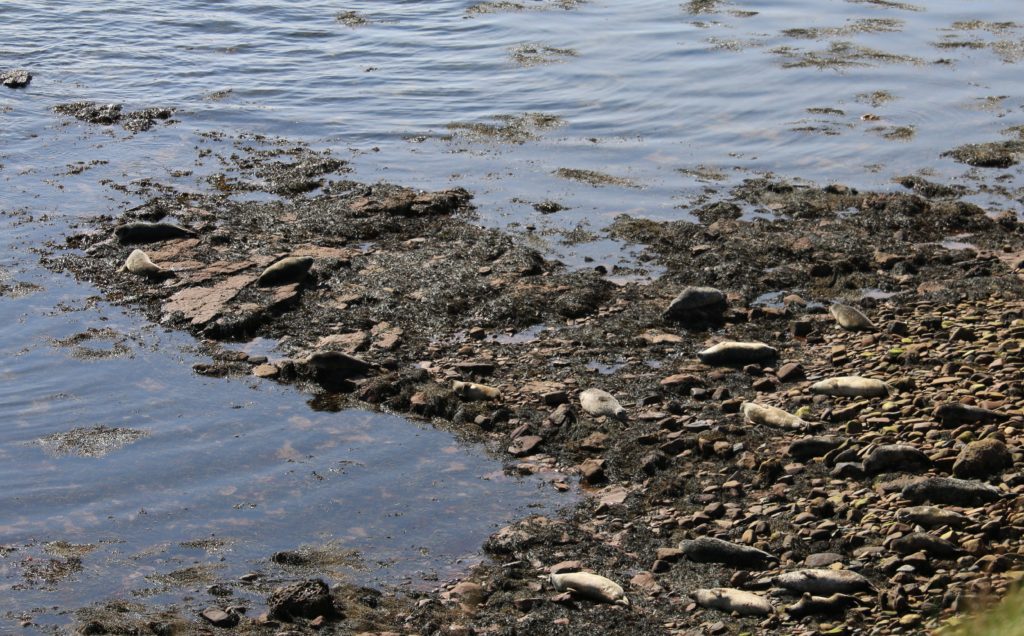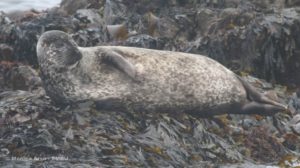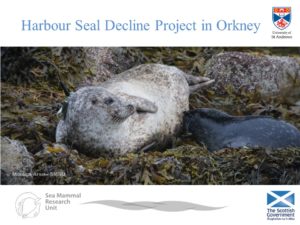
Last week I was invited to give a presentation about the harbour seal decline project to the Orkney Field Club. The club is a local charity which focuses on enjoying, understanding, recording and conserving Orkney’s flora and fauna. The club very kindly organized the venue and made sure to spread the word around its members. It was a great evening with a great turn up of over 30 people!
I presented some background information on grey and harbour seals and their current population trends, and then went into the details of the research conducted in Orkney and other areas of Scotland to investigate the decline in harbour seal numbers.

Showing the movements of the 10 seals that were tagged in back in May was a highlight of the evening, with surprised faces among the audience of how far or close has each seal been moving over the last couple of months.

We also talked about the use of photo-identification data to estimate birth and survival rates of harbour seals, and how this information is useful to assess the status of populations. We obviously dedicated some time to harbour seal pups, now that we are reaching the peak dates of pupping season in different regions across Scotland.

After the talk there was an open session of Q&A which was filled with interesting questions about the biology of harbour seals, the monitoring of populations and the potential causes of the observed decline in Orkney and other regions. Overall it was a fantastic evening, and I am very grateful to the Orkney Field Club for allowing me to join them for a seal chat. As the project will continue over the next few years, I am hoping I will have the opportunity to meet again next summer.
Written by Monica



